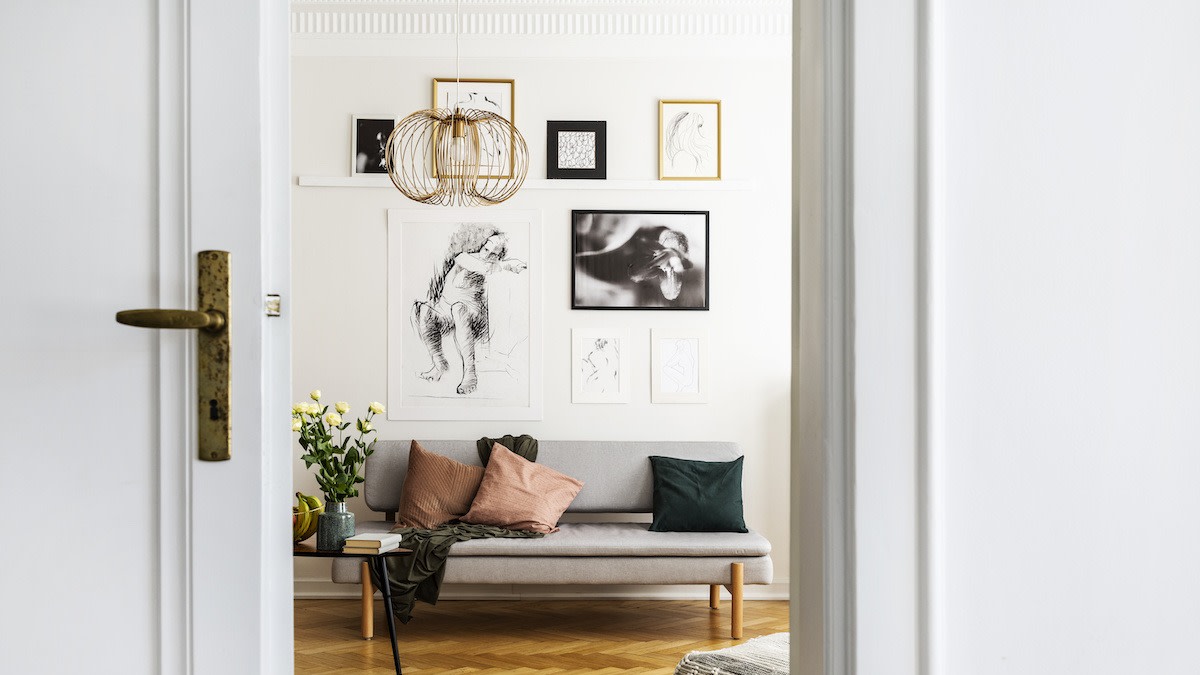Gallery Walls: How to Plan Your Gallery Wall for Your Home
Written by MasterClass
Last updated: Jun 7, 2021 • 4 min read
Achieving a perfect gallery wall takes some meticulous planning, but if you can follow a few simple rules to make your gallery wall cohesive and stylish.
Learn From the Best
What Is a Gallery Wall?
A gallery wall is a collection of items arranged close to each other on a wall for decoration. Hanging up your photos, paintings, puzzles, or other kinds of art on an empty wall can give your room interest, depth, and a creative focal point, even if you’re working with a small living space. Whether it’s in your living room, dining room, or anywhere else in your home, a gallery wall keeps things out of the way and on display, filling your space with color and character. You don’t need to be an interior designer to make a great gallery wall. There are a few simple DIY gallery wall tips to follow—like color themes, framing strategy, and a planned layout—that can bring your personal style to life.
How to Select Your Gallery Wall Art
A great gallery wall balances art that achieves the right balance of cohesion and eclecticness. Achieving that effect starts with the art you choose. Stick to these four tips when choosing your gallery wall art.
- 1. Choose a theme. If you’re having trouble trying to figure out what to fill a small or large wall in your home, try picking a theme. Whether it’s color, shape, or seasonal, choosing a cohesive theme can help you narrow down the many options you may have available, while contributing to a larger aesthetic goal. For instance, if you want to go more minimalist, you know you’ll have to stick with simpler frame styles and pieces of art. An ornate vintage mirror you found at the flea market won’t likely fit in with a sleeker style, so figure out the connecting thread through your gallery pieces and choose accordingly.
- 2. Repeat a few colors throughout the wall. Try to keep your selections within a particular family of colors—about 2–3 colors is a good rule of thumb—or choose ones that complement each other. If you want to use bold colors, try to choose a few different shades of that same color or a sharp contrast of black and white. If you want a variety of different hues, keep them within a designated color palette that can help control your color schemes like neutral earth tones or soft grays.
- 3. Select items of different sizes. Choose one or two larger pieces of art to feature on your gallery wall, then make a selection of medium to smaller-sized art prints or framed photos to fill in the space between. Vary your sizes to draw the eye to focal points, especially when sticking with something simple like all black frames or all wooden adornments.
- 4. Choose your picture frames wisely. Your framing strategy is an important key to making your gallery wall look cohesive. Stick to three types of frames—one type of wood (natural, dark, birch), one type of metal (silver or gold), and one type of neutral (black or white)—to tie your pieces together, while giving the frames the right amount of contrast.
- 5. Make it personal. The art gallery wall needn’t be limited to decorative prints. Objects of personal significance can help make your gallery wall truly unique, whether it’s snapshots, family photos, posters, or personal mementos.
How to Plan Your Gallery Wall Layout
Once you’ve chosen the art for your gallery wall, you want to plan how to display it. Read on below for how to choose the best structure for your gallery wall layout.
- 1. Arrange your display before you commit. Experiment with placement and spacing on your blank wall. Use a sketch pad or photoshop to plan out some possible arrangements. Lay out different combinations on the floor in front of where your gallery wall will be to get a sense of what your gallery wall will look like.
- 2. Start with the largest pieces. The larger art pieces in your gallery wall will serve as the anchors. They should be placed off-center, and with plenty of space between them to build a look with your other smaller art.
- 3. Vary the size and orientation of your pieces. Incorporate pieces of different sizes around your larger pieces in a loose pattern. Balance horizontal and vertical frames or canvasses to continuously draw the eye to the various aspects of your decor. Vary your style elements—like shiny finishes, or oddly-shaped items—to avoid having similar pieces next to each other.
- 4. Use color wisely. Make sure you spread out similar colors if you’re adhering to a specific color palette. Use colors at focal points throughout your wall in a way that creates balance and congruity, even if your arrangement is symmetrical.
Ready to Give Your Space a Chic Update?
Master everything from color theory to pattern mixing with the MasterClass Annual Membership and exclusive lessons from award-winning interior designers like Kelly Wearstler and Corey Damen Jenkins. From shopping for statement furniture to designing a lighting scheme to choosing the newest member of your plant family, the skills you’ll pick up are sure to make your house, apartment, or condo feel even more like a home.
